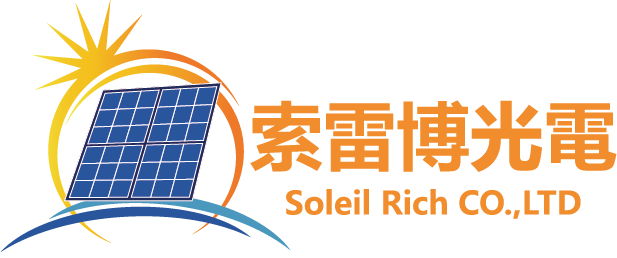How long does it take from signing the contract to when the solar photovoltaic system can start operating and generating electricity?
The establishment of a solar power system requires administrative application to Taipower, the Energy Bureau of the Ministry of Economic Affairs, and the construction and management office of the county and city government. The system installation project will take one to three months depending on the scale of the site, and it will take about three to six months from signing the contract to the operation of the system; the follow-up administrative operations will go back and forth, and the bulk sale will officially start in about three months.
How long does it take to install a solar photovoltaic system? Will the procedures be complicated?
Soleibo Optoelectronics provides a one-stop service, all construction and running processes will be handled by us. You only need to prepare the required documents, and we will assist you with the relevant procedures for applying to the government and Taipower. The construction period will vary depending on the scale of the site and the construction method. Generally, the construction time for residential houses is about 5-10 days. Larger agricultural, fishery and animal husbandry facilities, factories, etc. can be completed in about 20-60 days.
How many kilowatt-hours of electricity will my home use every day?
According to statistics, the average household in Taiwan consumes about 303 kWh per month and 9.9 kWh per day.
The annual average sunshine in Yunlin reaches 1,250 hours and about 3.4 hours of sunshine per day.
If a 5kW solar system is installed, about 17 kilowatt-hours of electricity can be generated every day. Compared with electricity consumption, solar energy systems generate twice as fast electricity every day, which can not only increase the proportion of renewable energy but also spread the load on the grid.
How much capacity can be installed on my roof?
Excluding the unusable space, the area required to install a 1KW solar photovoltaic system is about 2 pings. Therefore, if the roof space is 10 pings, a 5KW capacity system can be installed.
What is the unit of 1kw? How to calculate 1 kilowatt-hour of electricity?
W=watt = Watt (Te), is the unit of power
1kW = 1,000W = one kilowatt = 瓩 (pronounced "kilowatt")
1 kWh = 1kWh = the amount of electricity consumed by an electrical appliance with a power of 1kW for "continuous use for one hour"
In other words, if you use a 1kW hair dryer to blow continuously for 1 hour, it will consume 1 kWh of electricity.
From the perspective of power generation, if you have a 1kW solar photovoltaic system, you can generate 1 kilowatt-hour of electricity under 1 hour of "effective sunlight".
So if you are in a cloud forest where the average daily sunshine hours are about 3.5 hours, and a 10kW solar photovoltaic system is installed on the roof, then under ideal conditions, an average of about 35 kilowatt-hours of electricity can be generated per day.
Isn't the solar water heater on the roof of my house a solar system? Why can't it generate electricity?
Both solar water heaters and photovoltaic systems are environmentally friendly renewable energy equipment. Solar water heaters are "light-to-heat", which uses heat collectors to absorb the "heat energy" of sunlight to heat water; while solar photovoltaic systems are "light-to-heat". Electricity conversion uses solar modules to collect the sun’s “light energy” and convert it into “electricity”.
If you already have a solar water heater, we will plan and design the most effective way to use the space, and perfectly combine the solar photovoltaic system and the water heater to create a greener life for you!
What are the conditions for installing a solar system?
General residential houses are suitable for installation if they meet the following conditions:
1. No shade buildings around
2. Set up the site as a legal construction site
3. The structure is sufficient to support solar photovoltaic panels
4. Sufficient regional feeder capacity
5. Legal construction, and there is a copy of the house and land ownership certificate or a transcript of the land register
What are the environmental benefits of installing a solar system?
1. Solar energy is renewable energy, so don’t worry about energy exhaustion.
2. Reduce carbon dioxide emissions and improve air quality.
3. Increase the proportion of independent energy sources and reduce the risk of energy dependence on imports.
4. Distributed power system, the electricity generated can be effectively used nearby.
What are the benefits of installing a solar system for me?
1. With shading and heat insulation effects, the temperature can be reduced by 3-5 degrees, saving air-conditioning costs.
2. Waterproof and shading can protect and extend the life of a building roof.
3. Effectively activate and utilize idle space.
4. High return on investment, 20 years of long-term stable profitability.
What are the options for installing solar photovoltaic systems?
● Option One-Roof Rental:
The homeowner can get a complete set of a solar photovoltaic roof without any investment, which can protect you from wind and rain, protect the roof, and help cool the house by 3-5 degrees.
The amount of electricity sold will be paid back to the homeowner in proportion to earn a stable rental income.
The lease contract is notarized by a third-party notary unit to protect the rights and interests of the homeowner for 20 years.
● Option Two-Self-built system:
The homeowner's self-financing committee will build the solar photovoltaic system by Minghui Energy.
The homeowner can earn full income from the sale of electricity.

